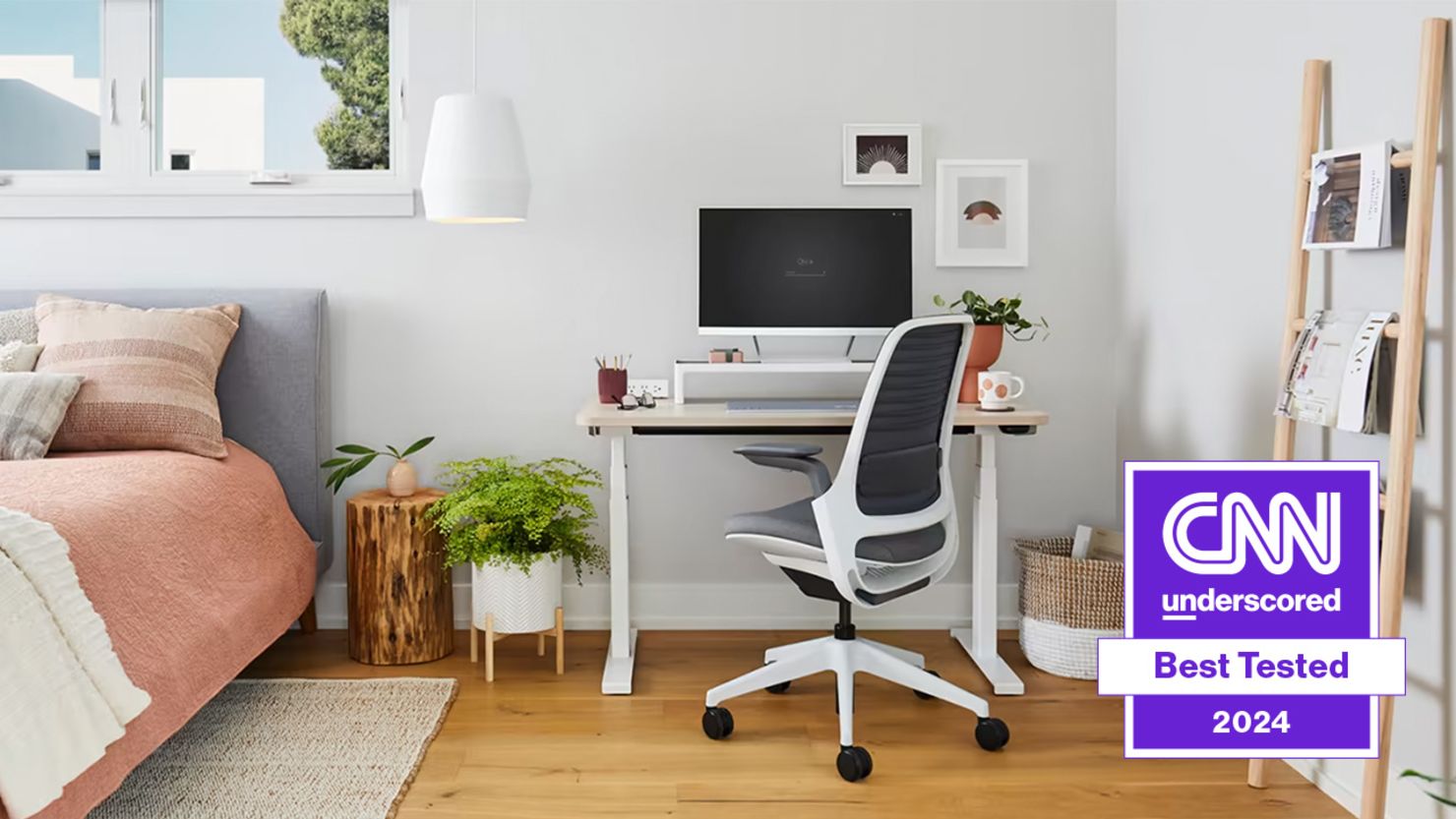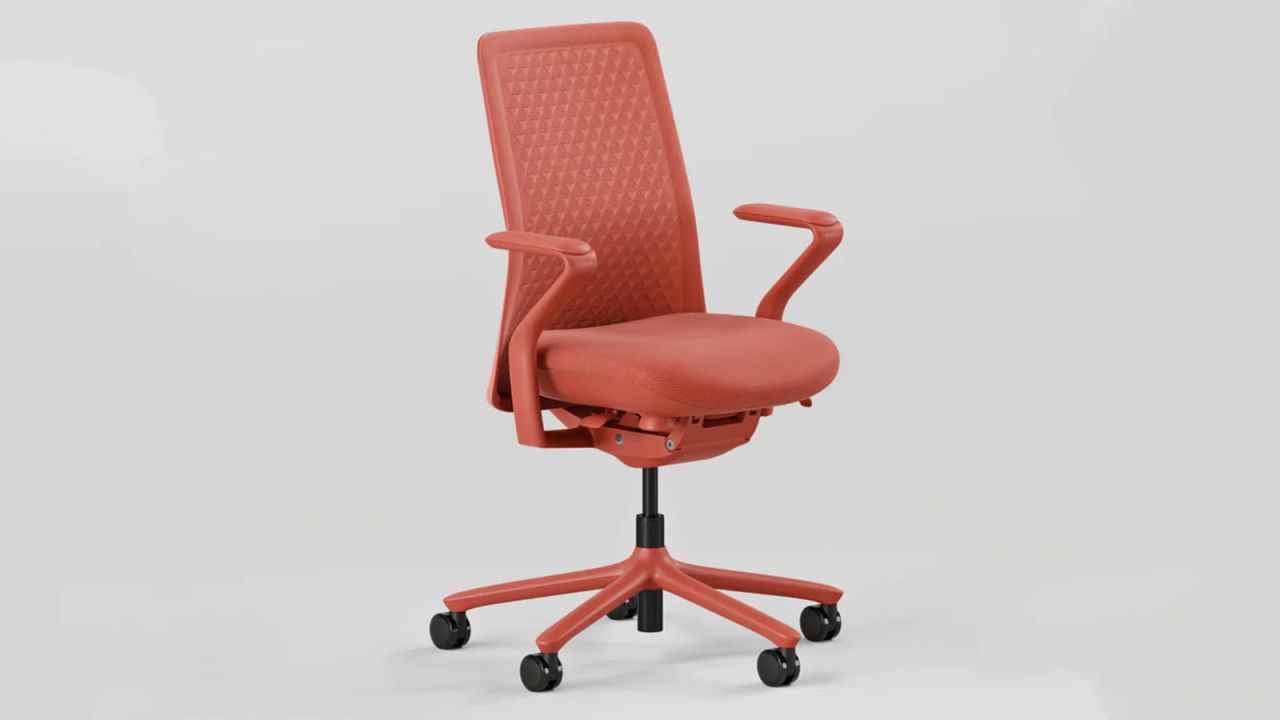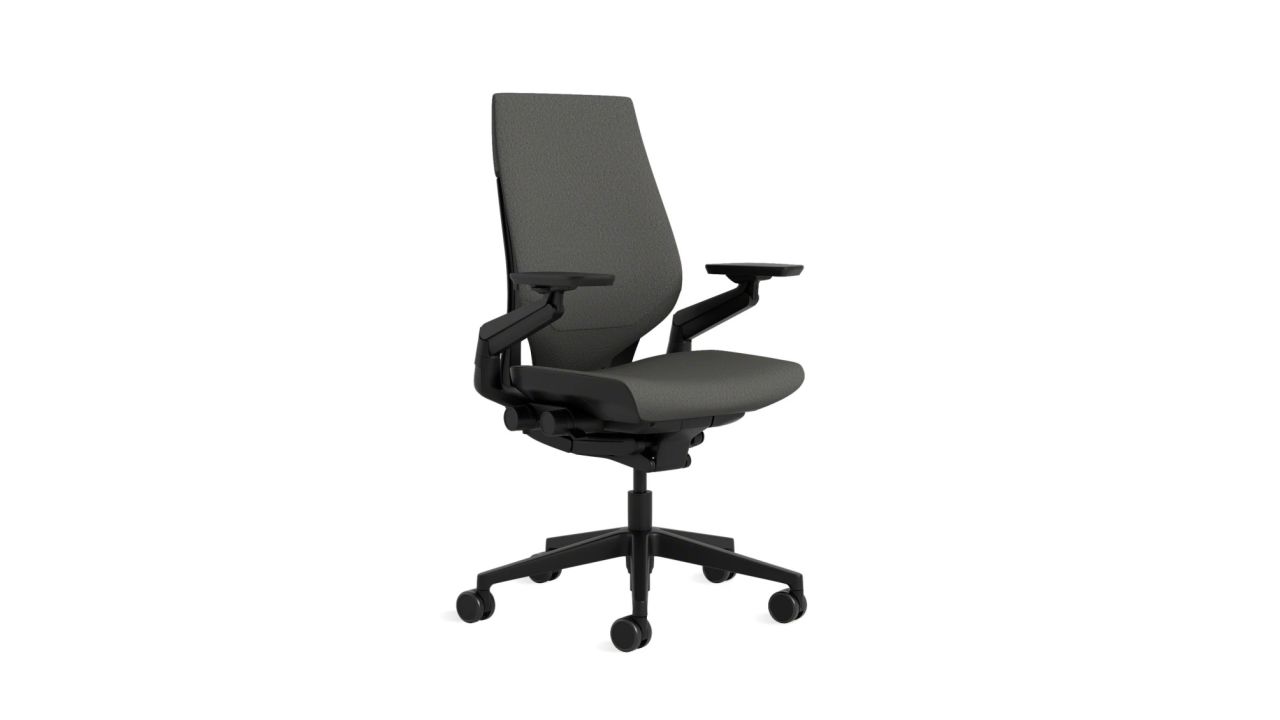The best office chairs we tested:
Best office chair: Steelcase Series 1
Best budget office chair: Alera Elusion Series Mesh Multifunction Chair
Even if you’re not working from home full-time anymore, as many of us were during the pandemic, hybrid work is still the norm at plenty of companies. That can mean upwards of 20 hours spent using your own office furniture every week, so it’s important not to skimp out on things like a standing desk or a supportive office chair.
In an effort to discover which office chairs are actually comfortable, we spent more than a month testing 15 different options varying in price, function and style. We compared important features like ergonomic design, back and lumbar support, and tilt mechanisms — and dug into whether more expensive options are really worth the extra cash. In the end, two chairs sat comfortably at the top of our list:
The Steelcase Series 1 stood out as one of the most customizable, high-quality, comfortable office chairs on the market, beating out chairs double the price — making it the best bang for the buck.
The Alera Elusion Series Multifunction Chair emerged as our best budget pick, standing up to (and in some cases far surpassing) office chairs that retail for more than five times its price point, particularly in the comfort and adjustability categories.
Best office chair: Steelcase Series 1
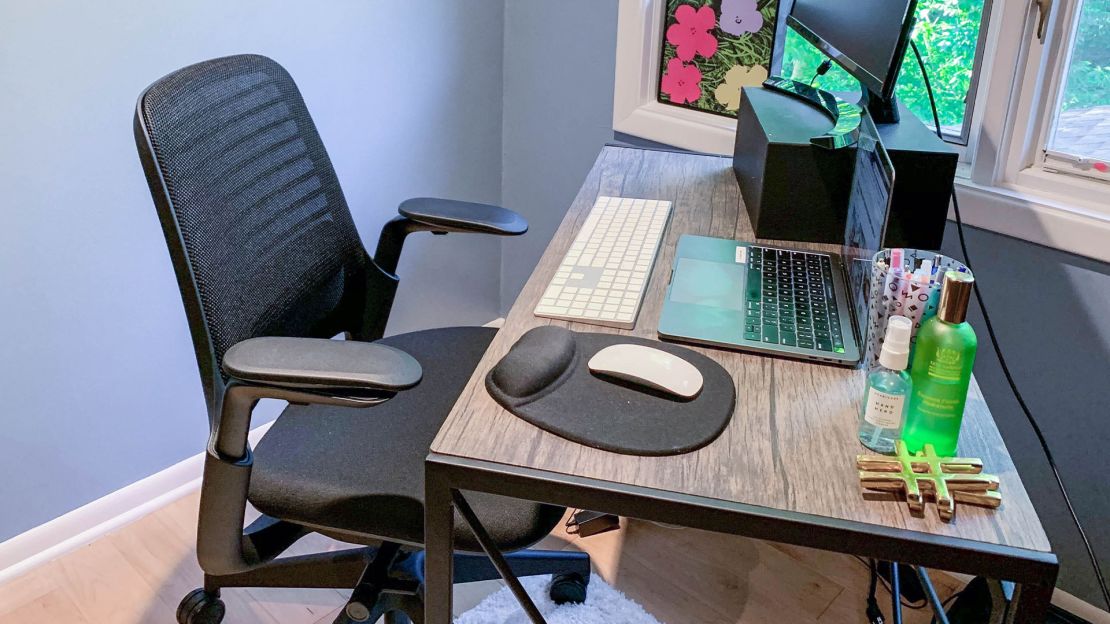
On?its website, Steelcase offers a good deal of information about what makes a quality office chair. The basics: It should “flex with you — helping you change postures while you sit; fit the natural contour of your back; move as you do,” while also allowing your arms to stay straight on your desk and your eyes level with your screen while you recline. After spending nine workdays testing three different Steelcase models, we feel safe in saying Steelcase knows what it’s talking about.
While all three of the Steelcase chairs received high marks in our testing pool, the Series 1, Steelcase’s most affordable option, blends exceptional comfort and value better than any chair we tested.
At first glance, the mesh chair’s aesthetic is unassuming, with simple, clean lines and a compact size. When compared with the other products we tested, which sometimes had sharp angles, oddly elongated backrests and unnecessarily large armrests, we found the Series 1 to be one of the better-looking office chairs in our pool.
But when it comes to chairs, it’s more important that they’re easy on your back than on your eyes. We’re happy to report that with the Series 1, Steelcase marries function to that beautiful form. After three days of sitting in the chair, we felt the seat had the perfect balance of cushiness and firmness (further long-term testing over the past year further supports this). While we were initially concerned that the thick, plastic lumbar adjustment would feel stiff, it wasn’t an issue. The mesh backrest was both flexible and supportive throughout the testing period. The backrest, which has what Steelcase refers to as “Integrated Liveback Technology,” might not look as structured as some of the heavily padded backrests on the market, but it outperformed the cushioned backrests because it moves with you as you work and shift seating positions.
As we learned throughout the chair testing process, backrest and seat comfort are negligible if a chair doesn’t allow you to customize it to fit your specific body. This is where the Series 1 really shines. While some of the other office chairs we tested merely offer adjustable seat heights and backrest angles, nearly every aspect of the Series 1 can be adjusted. And as an added bonus, it’s actually easy to make each adjustment with minimal guidance: While several other adjustable models require diagrams, videos and guides for proper setup, the Series 1 generally moves and conforms with the body in a very intuitive way.
The arm height adjusts within a 5-inch range to help relieve upper back and shoulder fatigue; the arm width adjusts 4 inches overall; arm depth can retract 2 inches to allow the user to get closer to the work surface and into tight corners; seat depth adjusts within a 2.25-inch range to accommodate different leg lengths; lumbar height adjusts over 2.25 inches; the arm caps pivot independently 40 degrees inward and 40 degrees outward depending on your preference; and the seat height adjusts within a 5-inch range. If that list doesn’t mean much to you, here’s the bottom line: This chair is extremely adaptable.
This ergonomic office chair is less than half the price of several others we tested, yet provides more comfort and flexibility than just about every chair we tested at any price point, making it a clear winner in an expensive market.
Best budget office chair: Alera Elusion Series Mesh Multifunction Chair
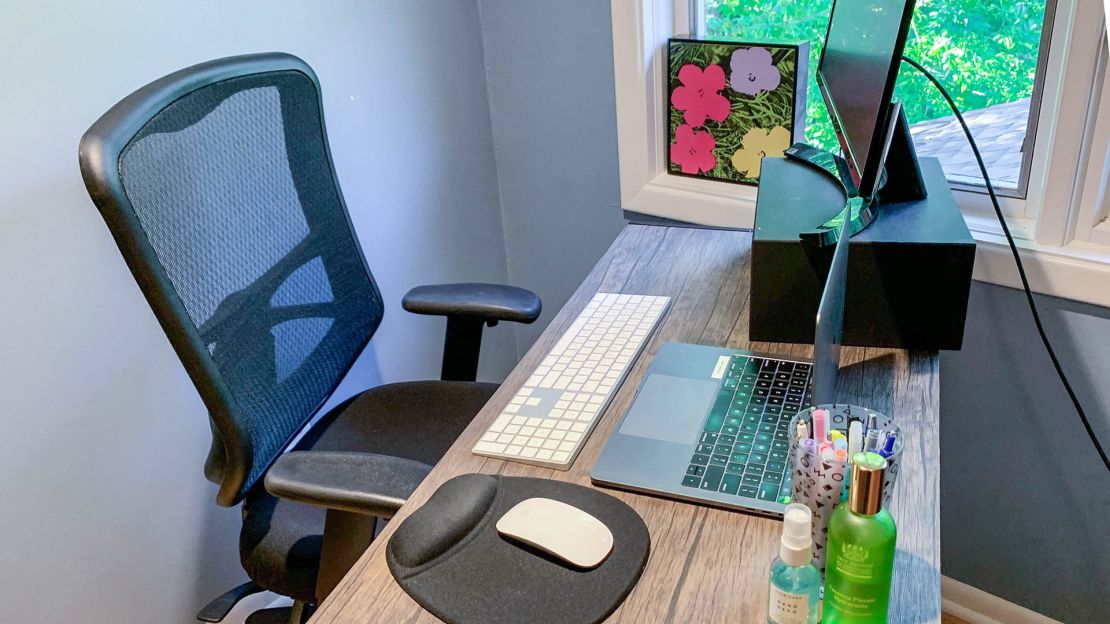
The Steelcase Series 1 might provide the best bang for your buck, but it’s still a fairly hefty purchase at around $400. While the majority of chairs under $200 we tested were more akin to a stack of cinder blocks than a high-end office chair, the Alera Elusion Series Mesh Multifunction Chair offers superb comfort and adjustability (it ranked third in that combined category, bested only by our best overall office chair and the Steelcase Leap Chair) with a very reasonable price tag.
The Elusion was one of the comfiest chairs we tested. Its thick seat cushion stood up to more expensive chairs, and the breathable mesh back was one of its best features.
While some of the adjustments on this chair are easier to make than others (though none of them work as seamlessly as with the Series 1), the Elusion does offer all of the customizations you need in a chair. Throughout the testing process, it became clear that height- and width-adjustable armrests are key, and this is another area where the Elusion succeeded. While the Elusion’s arms are very adjustable, they’re not as easy to adjust as the Steelcase armrests. To adjust the armrest width on the Elusion, you have to reach below the seat and turn a knob until you reach your desired position. The buttons for armrest height also feel a bit stiffer and harder to adjust than the mechanisms on any of the Steelcase chairs, but with a bit of force, it’s simple enough to move them. While the Elusion wasn’t the most adjustable product we tried (particularly with regard to armrest angle, which was not adjustable), both the height and the width of the armrests were ultimately more adjustable than the armrests on some of the much pricier competitors.
One of the least desirable aspects of this chair is its assembly process. Of all the chairs we had to assemble, the Elusion took the longest: a cumbersome 43 minutes (after unboxing) to get the chair set up, not including adjustments. Given the number of chairs that arrive fully assembled, you do have to commit a bit of elbow grease to save some money with the Elusion. The instructions were incredibly vague and we wasted a good amount of time trying to attach the armrests. But given that the assembly is just a one-time inconvenience that results in a very comfortable chair, it was not a deal-breaker, especially at this attractive price point.
While the Alera Elusion clearly has some limitations to its level of adjustability (most notably in the armrest angle and backrest height categories), its overall comfort level makes it one of the best options for its price tag, even after taking into account the somewhat lengthy assembly process.
How we tested
The testing process for these office chairs lasted nearly two months. We unboxed and assembled each chair, paying special attention to the amount of time each unboxing and building process took. For the chairs that required assembly, we logged the amount of time it took to put each chair together. Once each chair was fully built, we reviewed all of the adjustment materials included and adjusted the chair to the proper specifications as much as possible.
Once the chairs were properly assembled and adjusted, we sat in each chair for three consecutive 9-hour workdays in the exact same office setup and conditions every day. We carefully noted how each chair performed in different positions accommodating various tasks throughout the workday (typing, writing, phone calls and video meetings). We also logged the overall comfort level after several days of sitting and working in each chair. Overall, we evaluated based on what would be the most important to the user: comfort and adjustability, build and length of the warranty.
To determine the most accurate overall scores for each of these three larger categories, we broke the testing into 10 subcategories:
Comfort and Adjustability
- Seat comfort:?We noted how the seat felt upon first sitting down, and then re-evaluated at the end of the three-day mark.
- Backrest comfort:?We noted how the backrest felt upon first sitting down, and then re-evaluated at the end of the three-day mark.
- Armrest comfort:?We noted how the armrests felt upon first sitting in each chair, and then re-evaluated at the end of the three-day mark.
- Adjustability:?To evaluate each chair’s adjustability, we made a note of the various features on each chair that could be adjusted, ranked individual adjustability of each feature on a scale of 1 to 15, then averaged these numbers to get an overall adjustability score. We analyzed adjustability on a scale of 1 to 15 for each of the following office chair features: Seat height, seat angle, seat depth, armrest height, armrest width, armrest angle, backrest angle, backrest height
- Back and lumbar support:?We noted the level of lumbar support each chair provided (if any) upon first sitting in the chair. We also analyzed the level of back support each chair provided, paying special attention to how supportive the backrest felt in a range of angles and chair positions. Like the other tests, we then re-evaluated at the end of the three-day mark to determine a final score.
- Ease of reclining:?First, we noted whether each chair allows the user to recline. Then, for the chairs that did include a recline function, we ensured that each chair was adjusted to its loosest or easiest recline setting, then noted how easy it was to recline the chair while sitting in a normal position.
Build
- Ease of assembly:?For the chairs that required some level of assembly upon delivery, we recorded the amount of time it took to unbox and assemble the chair, from start to finish (not including time spent properly adjusting the chair).
- Quality of chair materials:?We made a note of our first impression of the fabric, armrest materials and finishes on each chair. We paid special attention to how sturdy each chair seemed upon first impression (i.e. did it squeak or seem as though it could fall apart?). We also made a note of these details after three days of sitting in each chair.
- Overall aesthetic:?We assessed each chair’s overall appearance compared with the other chairs on the market and in our testing pool. We also made a note of the variety of color options for upholstery, metals, plastics and other materials used to make each chair.
Warranty
- Does it have a warranty??We rated the length and coverage of the warranty for each chair.
